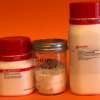Herbs and Spices have a history of high concentrations of BPA and phthalates. Therefore, even though they are used in small amounts, they can have surprisingly high concentrations. This ad-free article is made possible by the financial support of the Center for Research on Environmental Chemicals in Humans: a 501(c)(3) non-profit. Please consider making a tax-deductible donation for […]







